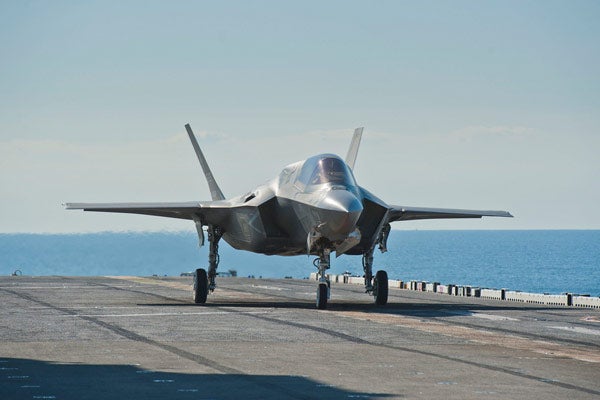A report from the National Audit Office (NAO) has warned the UK Ministry of Defence (MoD) that the Lockheed Martin-built F-35 Joint Strike Fighter (JSF) aircraft variant, selected for the Royal Navy, will not be capable of performing vertical landing on ships in warm weather conditions.
In May 2012, the UK MoD changed its decision and reverted to the short takeoff, vertical landing (STOVL) version of the aircraft.
The NAO report stated that the STOVL variant ‘is unable to land vertically on to a carrier in hot, humid and low-pressure weather conditions without having to jettison heavy loads’.
The JSF is scheduled to carry out operations aboard the Royal Navy’s two new Queen Elizabeth-class aircraft carriers, HMS Queen Elizabeth and HMS Prince of Wales, from 2020.
In addition to raising landing concerns, the report also highlighted several flaws related to the F-35 project, including full operational capability (FOC) of the early warning ‘Crowsnest’ radar that will be installed on the aircraft.
The radar is set to undergo testing before being declared FOC in 2022.
Commenting on the report, UK shadow defence secretary Jim Murphy said: "Flawed ministerial decisions have wasted millions of pounds of taxpayers’ money at a time of mass service sackings and cuts to pensions and allowances."
However, defence secretary Philip Hammond justified the MoD’s decision saying that the landing problem of the aircraft would be ‘overcome by the time the first carrier is ready for service in 2020’.
Delay to Crowsnest deployment would not weaken the safety of the aircraft carriers, he insisted.
"Until then, its maritime surveillance capabilities will be augmented by other platforms and systems, including the state-of-the-art radar on the Type 45 destroyers, working together in a layered defence," Hammond said.
Image: The F-35 JSF aircraft is designed to perform STOVL aboard ships. Photo: file image.









